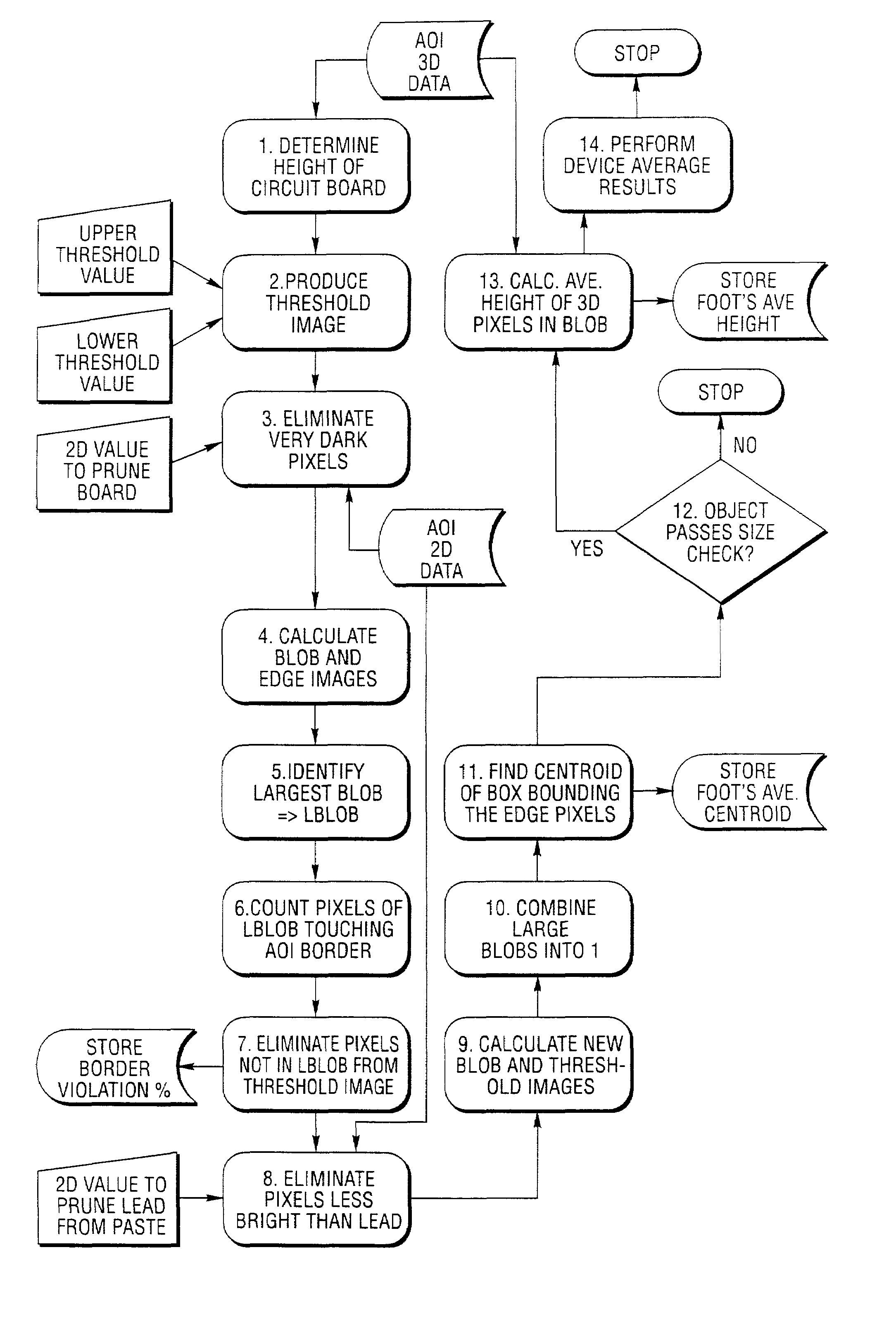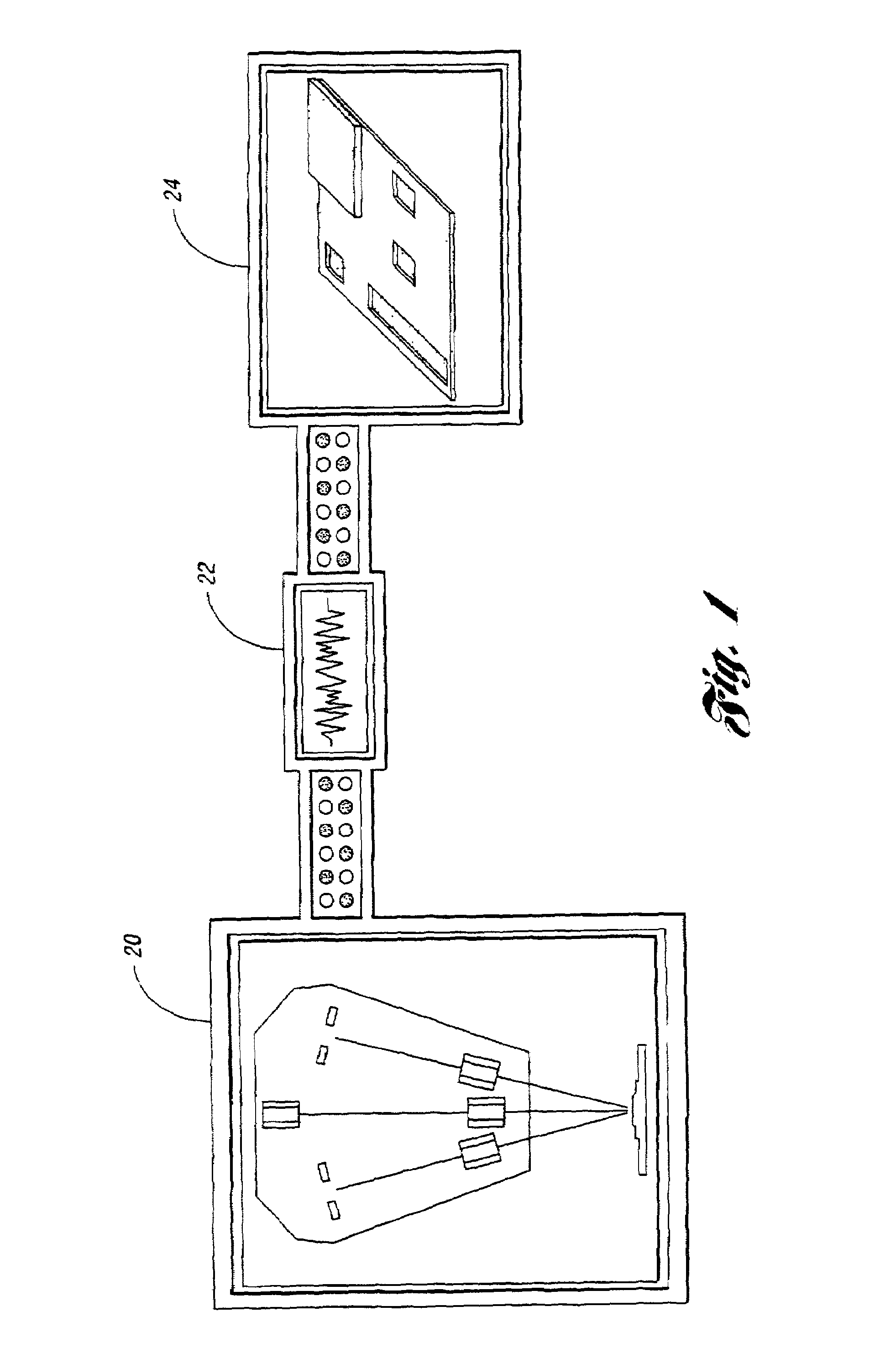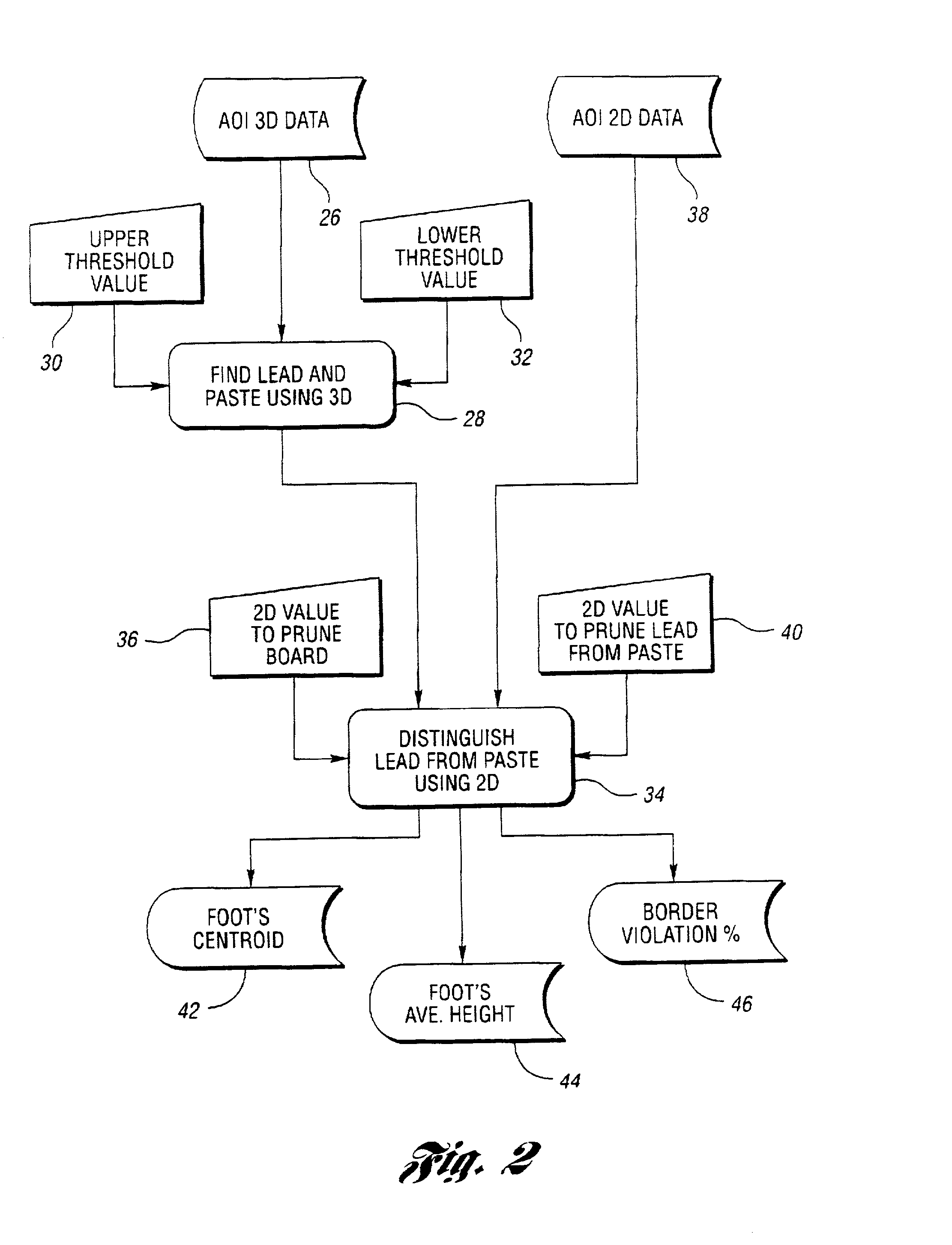Method and system for inspecting electronic components mounted on printed circuit boards
a technology of electronic components and printed circuit boards, applied in the direction of material analysis, television systems, instruments, etc., can solve the problems of poor performance, false-calling of methods, and inability to directly provide lead coplanarity information,
- Summary
- Abstract
- Description
- Claims
- Application Information
AI Technical Summary
Benefits of technology
Problems solved by technology
Method used
Image
Examples
Embodiment Construction
Lead Foot Algorithm
[0048]In one embodiment of the present invention, the foot of the lead is located. The method and system of the present invention rely on the fact that component leads which are difficult to identify using 2-D or 3-D data alone can be more easily identified with a combination of both 2-D and 3-D data. The following table illustrates this concept clearly:
[0049]
Visible Elements2-D Category3-D CategoryBodyDarkHighKneeBrightMedium HighFootBrightMedium LowPasteDarkMedium LowBoardDarkLowTraceBrightLow
[0050]Note that the lead (i.e., foot) cannot be uniquely identified with either the 2-D or 3-D data as categorized above, but there is a unique identity given by bright 2-D data and medium low 3-D data.
[0051]Data acquisition for the best mode is accomplished via an inspection system utilizing 3-D laser scanning technology, as illustrated in FIG. 1. At block 20, a solid state dual detector laser acquires data at millions of data points per second.
[0052]At block 22, high-spee...
PUM
 Login to View More
Login to View More Abstract
Description
Claims
Application Information
 Login to View More
Login to View More - R&D
- Intellectual Property
- Life Sciences
- Materials
- Tech Scout
- Unparalleled Data Quality
- Higher Quality Content
- 60% Fewer Hallucinations
Browse by: Latest US Patents, China's latest patents, Technical Efficacy Thesaurus, Application Domain, Technology Topic, Popular Technical Reports.
© 2025 PatSnap. All rights reserved.Legal|Privacy policy|Modern Slavery Act Transparency Statement|Sitemap|About US| Contact US: help@patsnap.com



